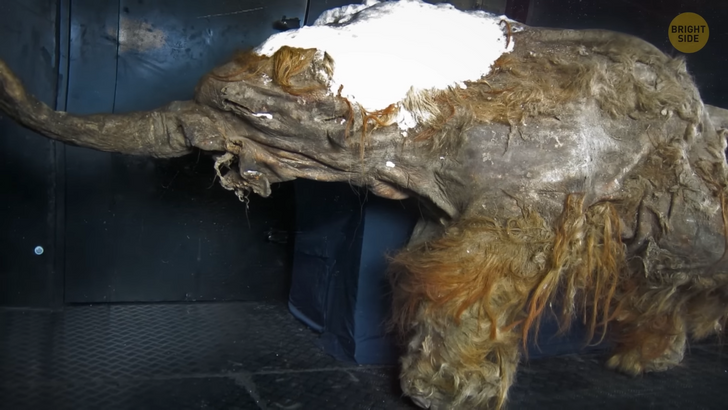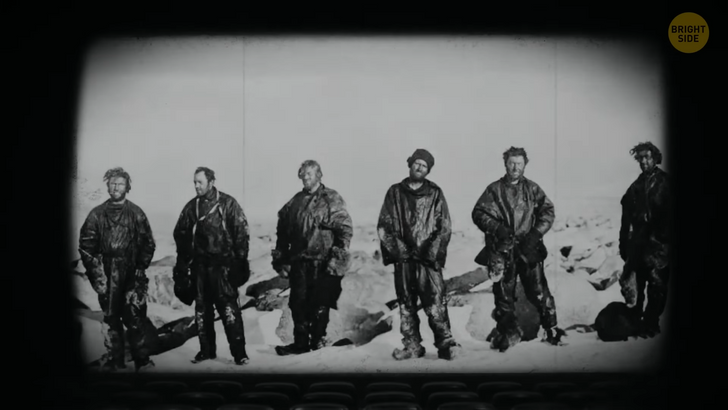I Asked My Son’s Ex-Wife to Join Our Holiday Dinner — It Ended in Disaster

Meet “Ötzi” or “The Iceman” — a natural mummy. He lived sometime between 3350 and 3105 BCE. He was discovered in 1991 in the Ötztal Alps, near the borders of Austria and Italy. And yes, the nickname derives from the name of the mountain. Ötzi is Europe’s oldest known naturally mummified human. Ötzi was 40 something when it happened. Science is awesome.
We now even know that he was left-handed and lactose intolerant! He was wearing shoes stuffed with grass and laced with aurochs leather. He also had a fur hat and carried a backpack with everything he needed to quickly make a fire. His body is now kept in a special room at a constant temperature of around −21˚ Fahrenheit. These days, Ötzi is kinda a celebrity, featuring in numerous documentaries and books.

A decades-old mystery is solved. In 1942, Marcelin and Francine Dumoulin left their home in southwestern Switzerland to get some food. But they never returned. No one knew what had happened to them. A ski resort worker solved the mystery 75 years later! He found two people dressed in the 1940s fashion, in ice. DNA tests revealed that they were that exact married couple! The couple had 7 children. After their parents’ disappearance, the children never stopped looking for them. One of the children, Udry-Dumoulin, said she wouldn’t wear black to the ceremony. She thought that white would be more appropriate since it represented hope, which she never lost.
I’ll take you back to 2016. On an ordinary summer day, a gold miner was traveling in search of gold in Canada. He spotted something in the melting ice. He got closer. A treasure greeted him! Well, a treasure for science. The miner found the oldest and most complete wolf mummy ever discovered in the world. This wolf was part of an ecosystem that no longer exists today. The local people [Tr’ondëk Hwëch’in] named the 57,000-year-old pup “Zhur,” meaning “wolf” in their language. Experts have been able to get a glimpse of what Zhur’s life was like thousands of years ago. They’ve discovered that she mainly ate fish and other seafood instead of large mammals. Previously, scientists assumed that Yukon wolves mainly fed on bison or musk oxen during the Ice Age.

You’re hiking Mont Blanc in the French Alps. You see a small metal box blinking at you from under the ice. You slowly approach it. Oh, it’s full of jewelry worth $340,000! This is a real story. The person who found the box handed it to the police. It turned out there were hundreds of diamonds, rubies, emeralds, and sapphires inside. The markings said, “Made in India.” Police already knew that there were 2 major incidents regarding Indian Airways around the area. But they dated back to 1950 and 1966!
The box had been hidden under the ice for at least 5 decades. Experts couldn’t identify the owner of the precious gems. They believe that the box belonged to a passenger who was going to New York to sell the jewels. Well, let’s hope the buyer didn’t make any pre-payment. Every year, new stuff comes to the surface in the area when ice melts. For instance, newspapers with headlines from the time when Gandhi became India’s prime minister. Climbers also routinely find luggage and other personal items there.
Let’s travel 39,000 years back in time. Meet Yuka the Woolly Mammoth. Yuka is special because it’s the best-preserved mammoth ever found. Local tusk hunters discovered it in 2010. Yuka became a natural mummy thanks to the ice preserving it. Scientists made analyses that revealed that Yuka was a 6-year-old female mammoth.

Now, how about some ice worms? Yes, those do exist! They live on glacial ice in Alaska, Washington, Oregon, and British Columbia. They spend their whole life on ice. You can see them on the surface of glaciers 2 times a day, in the evening and in the morning. They go up to feed on snow algae. Scientists call them a scientific paradox.
When temperatures are low, any creature’s bodily reactions slow down, and energy levels drop. Cold-blooded creatures like worms become sluggish when it gets too cold. But the laws of nature don’t seem to apply to ice worms! They thrive and are very active when it’s freezing cold! But as glaciers are melting, ice worms’ habitats disappear too! Ice worms can be up to an inch long and are black or blue in color. Fun fact: there are stories and songs about them. Supposedly, they give glaciers ice their blue color. But it’s just a myth.
This horned lark is an Ice Age animal. Not the cartoon, the actual one. Local fossil ivory hunters found this frozen lark in Siberia in 2018. Luckily, they notified experts about their discovery. After the examination, scientists found out that the bird had lived around 46,000 years ago. The most interesting thing is that the bird was in such good shape — considering that it’d been under the ice for millions of years. Experts say the lark looked as if whatever happened to it occurred just a few days ago. Turns out the bird lived in the same era as other Ice Age animals, for example, mammoths.

This book was lost for decades. It belonged to George Murray Levick, a surgeon and photographer. In 1910, he was on an expedition to Antarctica. Levick and his teammates spent months observing the penguins. But they had to drop everything due to harsh weather conditions. Levick and his team were trapped in the area. They survived by digging a tight ice cave. Eventually, a ship managed to get to a nearby location, and they were saved. But Levick left his notebook behind. It had lists of dates, subjects, and photographs he took at Cape Adare. Most pages of the book got dissolved. Yet experts managed to save what was left of it. The notebook was published a century after it’d been written.
Look at this bone! It belongs to a scimitar cat. The bone was found in Klondike, Alaska. What makes it unique is that scientists managed to extract DNA from it. They found out it was a pre-Ice Age animal — more than 50,000 years old! Scientists used to assume there weren’t many scimitar cats in the world. But this bone debunked previous theories. Plus, researchers found out that these cats had had natural hunting abilities, good eyesight, and endurance for long-distance running. At one point in the past, the number of animals the cats hunted started to decline. And ultimately, scimitar cats were outcompeted and eventually disappeared.

Not just ice worms but also viruses live in ice! Researchers revived 33 types of ancient viruses, which had been frozen 15,000 years ago. 28 of them were unknown to science. It might sound a bit scary. But scientists say these viruses are unlikely to harm people. You can put your doomsday pack aside. Before, viruses even older than these ones were revived without any problems.
For instance, in 2014, scientists found a virus that was around 30,000 years old in— guess where? — yes, Siberia. But microbes that can cause problems do concern scientists. For example, after a heatwave in 1941, bacteria got out of a frozen reindeer carcass trapped under Siberian permafrost. Several people living in a nearby village were hospitalized because of the effects of the virus. Who knows what other viruses can be trapped in older permafrost layers? Well, let’s hope they remain where they are, fingers crossed.

Bonus: In the 1960s, an underground facility was built in Denmark. The details of the project were first revealed only in 1995. When the facility was decommissioned in 1967, its infrastructure and waste were left untouched. Authorities probably thought that the facility would be forever entombed by snow and ice.
But studies claim otherwise. When the ice melts, the camp will reappear, and so will everything in it. Let’s hope nothing unpleasant comes to the surface.











